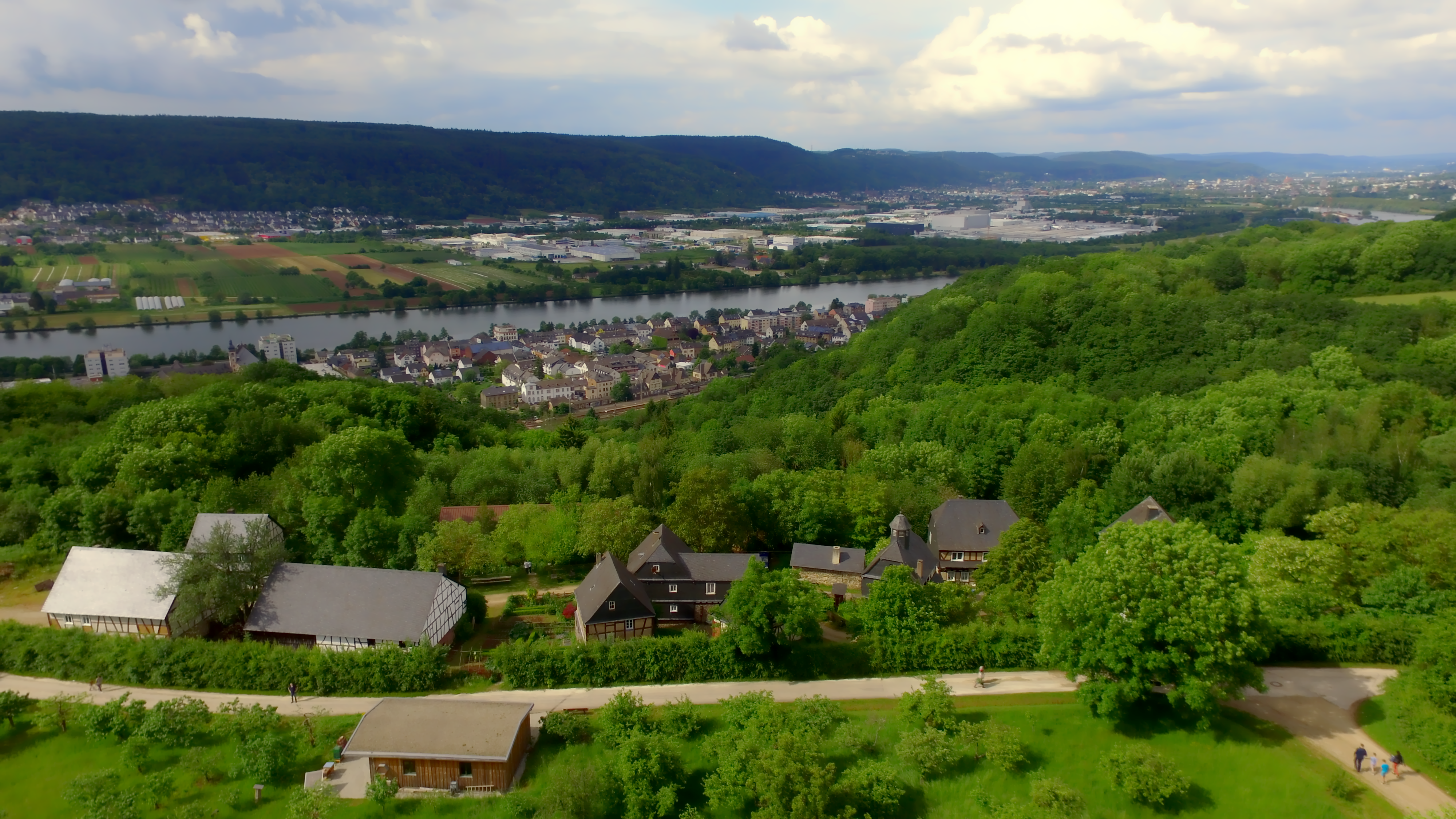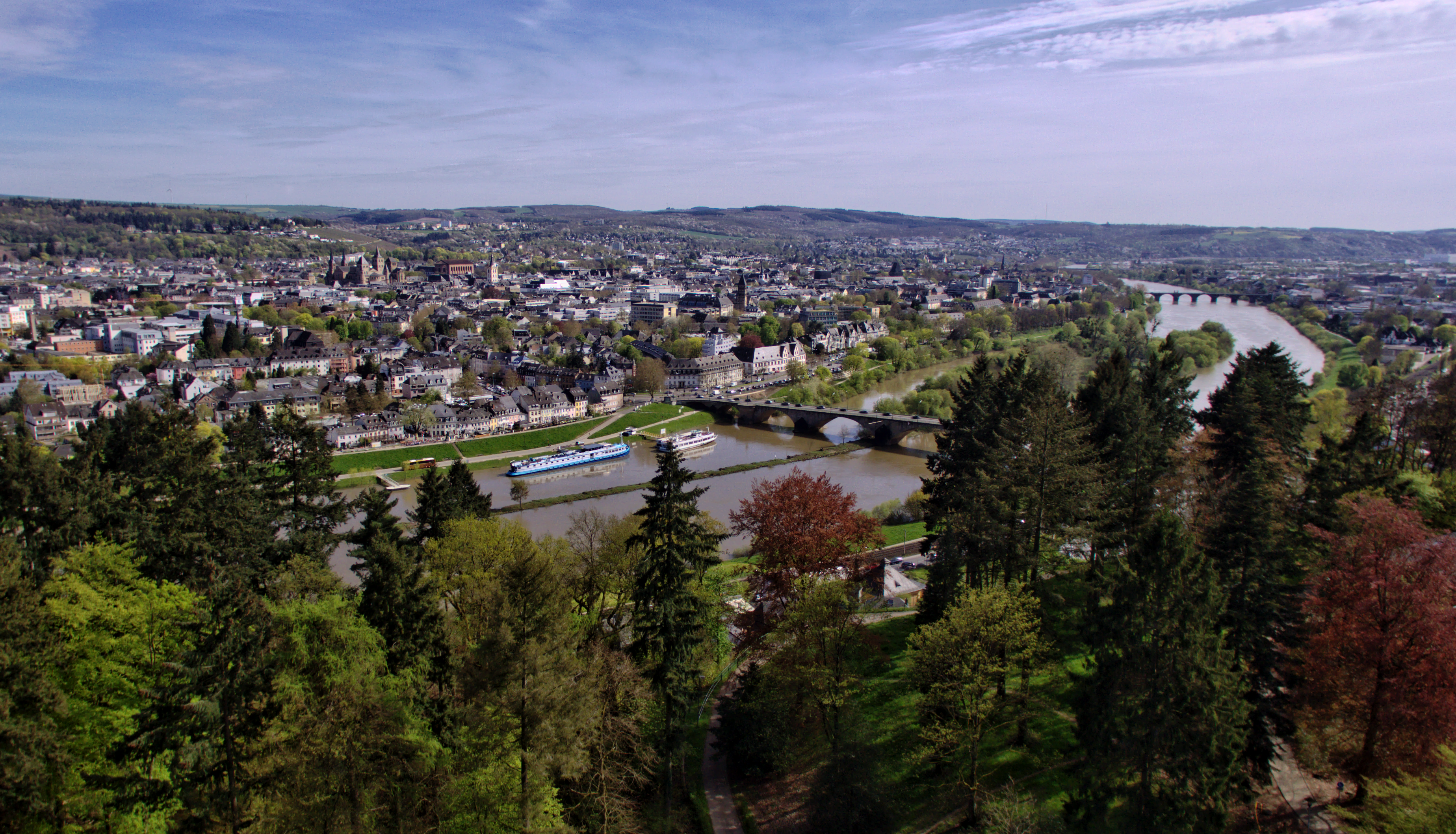|
Moselle
The Moselle ( , ; german: Mosel ; lb, Musel ) is a river that rises in the Vosges mountains and flows through north-eastern France and Luxembourg to western Germany. It is a left bank tributary of the Rhine, which it joins at Koblenz. A small part of Belgium is in its basin as it includes the Sauer and the Our. Its lower course "twists and turns its way between Trier and Koblenz along one of Germany's most beautiful river valleys."''Moselle: Holidays in one of Germany's most beautiful river valleys'' at www.romantic-germany.info. Retrieved 23 Jan 2016. In this section the land to the north is the Eifel which stretches into |
Moselle Pont-a-Mousson
The Moselle ( , ; german: Mosel ; lb, Musel ) is a river that rises in the Vosges mountains and flows through north-eastern France and Luxembourg to western Germany. It is a left bank tributary of the Rhine, which it joins at Koblenz. A small part of Belgium is in its basin as it includes the Sauer and the Our. Its lower course "twists and turns its way between Trier and Koblenz along one of Germany's most beautiful river valleys."''Moselle: Holidays in one of Germany's most beautiful river valleys'' at www.romantic-germany.info. Retrieved 23 Jan 2016. In this section the land to the north is the which stretches into |
Moselle River Near Cochem, Germany
The Moselle ( , ; german: Mosel ; lb, Musel ) is a river that rises in the Vosges mountains and flows through north-eastern France and Luxembourg to western Germany. It is a left bank tributary of the Rhine, which it joins at Koblenz. A small part of Belgium is in its basin as it includes the Sauer and the Our. Its lower course "twists and turns its way between Trier and Koblenz along one of Germany's most beautiful river valleys."''Moselle: Holidays in one of Germany's most beautiful river valleys'' at www.romantic-germany.info. Retrieved 23 Jan 2016. In this section the land to the north is the which stretches into |
Eifel
The Eifel (; lb, Äifel, ) is a low mountain range in western Germany and eastern Belgium. It occupies parts of southwestern North Rhine-Westphalia, northwestern Rhineland-Palatinate and the southern area of the German-speaking Community of Belgium. The Eifel is part of the Rhenish Massif; within its northern portions lies the Eifel National Park. Geography Location The Eifel lies between the cities of Aachen to the north, Trier to the south and Koblenz to the east. It descends in the northeast along a line from Aachen via Düren to Bonn into the Lower Rhine Bay. In the east and south it is bounded by the valleys of the Rhine and the Moselle. To the west it transitions in Belgium and Luxembourg into the geologically related Ardennes and the Luxembourg Ösling. In the north it is limited by the Jülich-Zülpicher Börde. Within Germany it lies within the states of Rhineland-Palatinate and North Rhine-Westphalia; in the Benelux the area of Eupen, St. Vith and Luxembour ... [...More Info...] [...Related Items...] OR: [Wikipedia] [Google] [Baidu] |
Bernkastel-Kues
Bernkastel-Kues () is a town on the Middle Moselle in the Bernkastel-Wittlich district in Rhineland-Palatinate, Germany. It is a well-known winegrowing centre. The town is a state-recognized health resort (''Erholungsort''), seat of the ''Verbandsgemeinde'' of Bernkastel-Kues and birthplace of one of the most famous German polymaths, the mediaeval churchman and philosopher Nikolaus von Kues (Cusanus). Geography Location Bernkastel-Kues lies in the Moselle valley, roughly from Trier. The greatest elevation is the ''Olymp'' (415 m above sea level), and the lowest point (107 m above sea level) lies on the Moselle's banks. The municipal area totals 23 657 101 m2, of which 7 815 899 m2 is used for agriculture, thereby making Bernkastel-Kues one of the Middle Moselle's biggest towns by land area. Neighbouring municipalities Clockwise from the north, these are Graach, Longkamp, Monzelfeld, Veldenz, Mülheim, Lieser, Maring-Noviand, Pl ... [...More Info...] [...Related Items...] OR: [Wikipedia] [Google] [Baidu] |
Traben-Trarbach
Traben-Trarbach on the Middle Moselle is a town in the Bernkastel-Wittlich district in Rhineland-Palatinate, Germany. It is the seat of the like-named ''Verbandsgemeinde'' and a state-recognized climatic spa (''Luftkurort''). The city lies in the so-called "Valley of Dawn". Geography Location Traben-Trarbach lies some 40 km northeast of Trier and some 60 km southwest of Koblenz in the valley of the Middle Moselle. North of the town is found the mountain inside a bend in the Moselle, Mont Royal. Frankfurt-Hahn Airport in the Hunsrück lies some 10 km away towards the east (in each case, as the crow flies). The municipal area spreads over a total of 31,350,000 m² with a great share of this being wooded. This makes Traben-Trarbach the biggest town by land area on the Middle Moselle. Traben lies on the Moselle’s left bank at the foot of the former fort of Mont Royal, and Trarbach lies on the right bank on the Hunsrück side. While Traben stretches in a br ... [...More Info...] [...Related Items...] OR: [Wikipedia] [Google] [Baidu] |
Cochem And Reichsburg
Cochem is the seat of and the biggest town in the Cochem-Zell district in Rhineland-Palatinate, Germany. With just over 5,000 inhabitants, Cochem falls just behind Kusel, in the Kusel district, as Germany's second smallest district seat. Since 7 June 2009, it has belonged to the ''Verbandsgemeinde'' of Cochem. Geography Cochem lies at an elevation of some 83 m above sea level and the municipal area measures 21.2 km2. The town centre with the outlying centre of Sehl upstream lies on the Moselle's left bank, while the constituent centre of Cond lies on its right. A further constituent centre, Brauheck, with its commercial area, air force barracks and new town development, lies in the heights of the Eifel on ''Bundesstraße'' 259, some from the town centre. Emptying into the Moselle in Cochem are the Kraklebach, the Ebernacher Bach, the Sehlerbach, the Falzbach, the Märtscheltbach and the Enthetbach. History As early as Celtic and Roman times, Cochem was settled. ... [...More Info...] [...Related Items...] OR: [Wikipedia] [Google] [Baidu] |
Trier
Trier ( , ; lb, Tréier ), formerly known in English as Trèves ( ;) and Triers (see also names in other languages), is a city on the banks of the Moselle in Germany. It lies in a valley between low vine-covered hills of red sandstone in the west of the state of Rhineland-Palatinate, near the border with Luxembourg and within the important Moselle wine region. Founded by the Celts in the late 4th century BC as ''Treuorum'' and conquered 300 years later by the Romans, who renamed it ''Augusta Treverorum'' ("The City of Augustus among the Treveri"), Trier is considered Germany's oldest city. It is also the oldest seat of a bishop north of the Alps. Trier was one of the four capitals of the Roman Empire during the Tetrarchy period in the late 3rd and early 4th centuries. In the Middle Ages, the archbishop-elector of Trier was an important prince of the Church who controlled land from the French border to the Rhine. The archbishop-elector of Trier also had great si ... [...More Info...] [...Related Items...] OR: [Wikipedia] [Google] [Baidu] |
Trier Vom Weisshaus2
Trier ( , ; lb, Tréier ), formerly known in English as Trèves ( ;) and Triers (see also names in other languages), is a city on the banks of the Moselle in Germany. It lies in a valley between low vine-covered hills of red sandstone in the west of the state of Rhineland-Palatinate, near the border with Luxembourg and within the important Moselle wine region. Founded by the Celts in the late 4th century BC as ''Treuorum'' and conquered 300 years later by the Romans, who renamed it ''Augusta Treverorum'' ("The City of Augustus among the Treveri"), Trier is considered Germany's oldest city. It is also the oldest seat of a bishop north of the Alps. Trier was one of the four capitals of the Roman Empire during the Tetrarchy period in the late 3rd and early 4th centuries. In the Middle Ages, the archbishop-elector of Trier was an important prince of the Church who controlled land from the French border to the Rhine. The archbishop-elector of Trier also had great signifi ... [...More Info...] [...Related Items...] OR: [Wikipedia] [Google] [Baidu] |
Rhine
), Surselva, Graubünden, Switzerland , source1_coordinates= , source1_elevation = , source2 = Rein Posteriur/Hinterrhein , source2_location = Paradies Glacier, Graubünden, Switzerland , source2_coordinates= , source2_elevation = , source_confluence = Reichenau , source_confluence_location = Tamins, Graubünden, Switzerland , source_confluence_coordinates= , source_confluence_elevation = , mouth = North Sea , mouth_location = Netherlands , mouth_coordinates = , mouth_elevation = , progression = , river_system = , basin_size = , tributaries_left = , tributaries_right = , custom_label = , custom_data = , extra = The Rhine ; french: Rhin ; nl, Rijn ; wa, Rén ; li, Rien; rm, label= Sursilvan, Rein, rm, label= Sutsilvan and Surmiran, Ragn, rm, label= Rumantsch Grischun, Vallader and Puter, Rain; it, Reno ; gsw, Rhi(n), includi ... [...More Info...] [...Related Items...] OR: [Wikipedia] [Google] [Baidu] |
Koblenz
Koblenz (; Moselle Franconian: ''Kowelenz''), spelled Coblenz before 1926, is a German city on the banks of the Rhine and the Moselle, a multi-nation tributary. Koblenz was established as a Roman military post by Drusus around 8 B.C. Its name originates from the Latin ', meaning "(at the) confluence". The actual confluence is today known as the " German Corner", a symbol of the unification of Germany that features an equestrian statue of Emperor William I. The city celebrated its 2000th anniversary in 1992. It ranks in population behind Mainz and Ludwigshafen am Rhein to be the third-largest city in Rhineland-Palatinate. Its usual-residents' population is 112,000 (as at 2015). Koblenz lies in a narrow flood plain between high hill ranges, some reaching mountainous height, and is served by an express rail and autobahn network. It is part of the populous Rhineland. History Ancient era Around 1000 BC, early fortifications were erected on the Festung Ehrenbreitstein hil ... [...More Info...] [...Related Items...] OR: [Wikipedia] [Google] [Baidu] |
Sauer
The Sauer (German and Luxembourgish, , ) or Sûre (French, ) is a river in Belgium, Luxembourg and Germany. A left tributary of the Moselle, its total length is . Rising near Vaux-sur-Sûre in the Ardennes in southeastern Belgium, the Sauer flows eastwards and becomes the border with Luxembourg near Martelange. It forms the border between Belgium and Luxembourg for north of Martelange. West of Esch-sur-Sûre it flows into an artificial lake, the Upper Sûre Lake created by the Esch-sur-Sûre Dam, which gives its (French) name to the Luxembourgian commune of Lac de la Haute-Sûre. After flowing through Ettelbruck and Diekirch, the Sauer forms the border between Luxembourg and Germany for the last of its course, passing Echternach before emptying into the Moselle in Wasserbillig. The rivers Wiltz, Alzette, White Ernz, Black Ernz The Black Ernz (, , ) is a river flowing through Luxembourg, joining the Sauer at Grundhof. It flows through the towns of Junglinster ... [...More Info...] [...Related Items...] OR: [Wikipedia] [Google] [Baidu] |
Luxembourg
Luxembourg ( ; lb, Lëtzebuerg ; french: link=no, Luxembourg; german: link=no, Luxemburg), officially the Grand Duchy of Luxembourg, ; french: link=no, Grand-Duché de Luxembourg ; german: link=no, Großherzogtum Luxemburg is a small landlocked country in Western Europe. It borders Belgium to the west and north, Germany to the east, and France to the south. Its capital and most populous city, Luxembourg, is one of the four institutional seats of the European Union (together with Brussels, Frankfurt, and Strasbourg) and the seat of several EU institutions, notably the Court of Justice of the European Union, the highest judicial authority. Luxembourg's culture, people, and languages are highly intertwined with its French and German neighbors; while Luxembourgish is legally the only national language of the Luxembourgish people, French and German are also used in administrative and judicial matters and all three are considered administrative languages of the country. ... [...More Info...] [...Related Items...] OR: [Wikipedia] [Google] [Baidu] |





.jpg)

.jpg)

